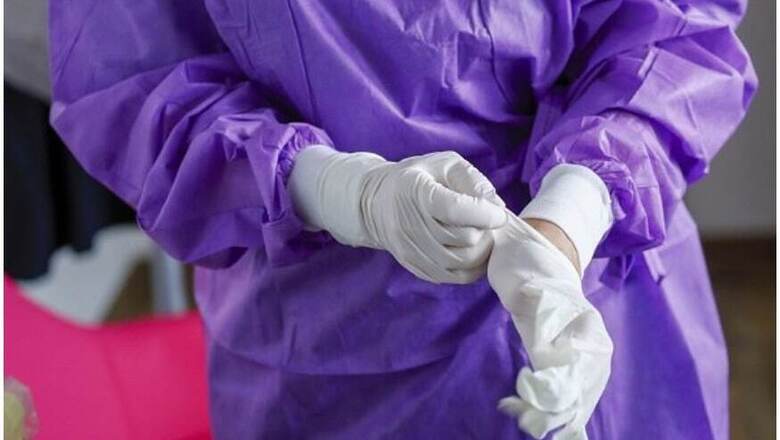
views
Researchers have created a textile coating that can prevent viruses from adhering to the surface of masks, gowns, and other personal protective equipment (PPE), an advance that may lead to better protection of healthcare workers during the COVID-19 pandemic.
According to the scientists, including those from the University of Pittsburgh in the US, textiles and materials used in PPEs can absorb and carry viruses and bacteria, inadvertently spreading disease the wearer sought to contain.
They said the coating, described in the journal ACS Applied Materials and Interfaces, provides better protection while allowing for safe reuse of PPEs, which are already in short supply amid the coronavirus pandemic.
"We want to push the boundary on what is possible with these types of surfaces, and especially given the current pandemic, we knew it'd be important to test against viruses," said Anthony Galante, study co-author from the University of Pittsburgh, and lead author of the paper.
The researchers said the uniqueness of the coating comes from its ability to withstand rigorous washing, scrubbing, and scraping.
In other similar coatings currently being used, they said washing or rubbing the surface of the textile tends to reduce or eliminate its repellent abilities.
"The durability is very important because there are other surface treatments out there, but they're limited to disposable textiles. You can only use a gown or mask once before disposing of it," said Paul Leu, another co-author of the study from the University of Pittsburgh.
Given the PPE shortage across the world, the scientists said, there is a need for coatings that can be applied to reusable medical textiles that can be properly washed and sanitised.
They tested the new material by running it through tens of ultrasonic washes, a method which uses high-frequency sound waves to agitate cleaning liquids.
The researchers also applied thousands of rotations with a scrubbing pad, and even scraping the fabric with a sharp razor blade.
After each test the coating remained just as effective, the researchers said.
"As this fabric was already shown to repel blood, protein and bacteria, the logical next step was to determine whether it repels viruses," said Eric Romanowski, another co-author of the study.
The study tested the material for its ability to repel human adenovirus types four and seven, as people commonly pick these up in hospital waiting rooms and from contaminated surfaces and can cause acute respiratory disease as well as conjunctivitis, the scientists said.
Since the fabric showed promise in repelling proteins, they hoped it would also repel viruses as the parasites are essentially proteins with genetic material inside.
"As it turned out, the adenoviruses were repelled in a similar way as proteins," Romanowski said.
He said the novel coating may have broad applications in healthcare.
Everything from hospital gowns to waiting room chairs could benefit from the ability to repel viruses, particularly ones as easily spread as adenoviruses, the scientists noted.
"It is rapidly spread in schools and homes and has an enormous impact on quality of life — keeping kids out of school and parents out of work," said Robert Shanks, another co-author of the study.
"This coating on waiting room furniture, for example, could be a major step towards reducing this problem," Shanks said.
The researchers hope to further test the effectiveness of the material against betacoronaviruses, like the one that causes COVID-19.
"If the treated fabric would repel betacornonaviruses, and in particular SARS-CoV-2, this could have a huge impact for healthcare workers and even the general public if PPE, scrubs, or even clothing could be made from protein, blood-, bacteria-, and virus-repelling fabrics," Romanowski said.













Comments
0 comment